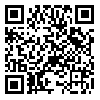BibTeX | RIS | EndNote | Medlars | ProCite | Reference Manager | RefWorks
Send citation to:
URL: http://jcp.khu.ac.ir/article-1-2753-en.html
In working memory (WM) tasks, performance can be boosted by directing attention to one memory object: When a retro-cue in the retention interval indicates which object will be tested, responding is faster and more accurate (theretro-cue benefit). This study tests explanations of the retro-cue benefits in 2 experiment desined by superlab software: Experiment 1, the effect of valid and invalid retro-cues compared with no-cues were tested before the memory test. Experiment 2, We tested whether the retro-cue benefit in WM depends on sustained attention to the cued object by inserting an attention-demanding interruption task between the retro-cue and the memory test. In this quasi-experimental study, with a series of repeated measurements, 30 individual (15 for each test) from graduate students of Ferdowsi University of Mashhad were selected by convenience sampling and were tested. Data analysis of variance with repeated measurements and t-test for paired samples were also analyzed. The result showed that valid retro-cue compared to the no-cue was better. Also, it was shown when visual interference was held constant, retro-cue benefits were still obtained whenever the retro-cue enabled retrieval of an object from VWM but delayed response selection. The results showed that retro-cue improved visual working memory performance.
Received: 2017/07/5 | Accepted: 2017/09/11 | Published: 2017/12/26
| Rights and permissions | |
 |
This work is licensed under a Creative Commons Attribution-NonCommercial 4.0 International License. |






